Matador Network's Blog, page 2144
February 13, 2015
On running and street harassment

Photo: John Loo
ON SATURDAY, not for the first time, my dad offers to buy me a gun. I’m still in my running gear, sitting on my bed, certain I’m leaving sweaty ass-prints on my good quilt, but I’ve got no choice. I have to sit here, crammed against the wall’s one outlet because my phone can’t hold a charge, and I have to call him. He’s my dad, and I want him to make me feel better.
My pop used to run long distances, too. Both sides of my family are athletic and built for hard labor, and when my parents met and merged, they birthed a batch of strong, sinewy children. Unlike my brothers, I didn’t use my powers to win homecoming games. I never gave a shit about sports at all until one day in college, when I went through a terrible time and needed to run away — and so I did. Running gave me a way to run away, as well as a way to come back to who I was. It also gave me something to talk about with family members who had never understood my lack of interest in sports.
Sometimes, when I call my pop now and talk to him, we talk about running. These conversations feel like another, newer language we are practicing together. It feels good. It gives us a way to connect.
But today I call him because this particular run felt really bad. I’m teary and trying to tamp it down. Before I can finish describing the sexual harassment I just endured from eight separate men during the one hour, 14 minutes, and 20 seconds it took me to run ten miles, my dad interrupts.
“See, now this is why you need a .38,” he says. “Something nice and small you can carry with you at all times.”
He’s joking, but he’s not. We’ve had this conversation before. Dad lives in Michigan, and I live in Chicago, and he is frightened for me. He gets mad at the idea of my vulnerability, and that anger sometimes comes out at me.
“You’ve got to ignore them,” he says for the billionth time. “You don’t have to prove a point by saying something back.”
I hold my breath. I remember that my dad is trying to keep me safe from his limited perch in Michigan, the way he did in September, just before I got on the train to head back and he told me to keep the cardigan of his I had worn all weekend. “Here,” he said then, pushing my hands back when I went to pass him his sweater. “It will make me feel like I can protect you when you’re back in the city.”
During the last decade of my life, I have run a minimum of 20-30 miles a week. In that time I have lived on three continents. In each country, in each village, in each sophisticated metropolis or rural outpost, I have been verbally harassed, physically chased, forcibly touched, and definitely followed. The severity and type of harassment varies, but the objective always feels the same: to try and take away my power as I do the thing that makes me feel most free.
I want to explain this to my dad, but then he will inevitably tell me not to travel, and that’s not the problem. The small number of men in India who smacked my ass at stoplights, or their gentler brethren who ran alongside me while asking me to marry them, are not representative of their entire country — just like the few but ever-present men of Ireland who looked and looked without saying a thing as I passed them on slim and scary country roads, men whose dogs would chase me down for miles, don’t represent all the men in their country. Harassment is universal, and I face just as much of it here in the country of my birth.
The “best” street harassment I have ever received came from a man with one leg calling out “Do your thang, girl,” as he gave me two thumbs up. I couldn’t be mad about him. The worst was when male children no older than thirteen told me to suck their dicks as they threw debris from the construction of the Bloomingdale Trail at my head. Just for a minute, I saw them as little boys, before their faces changed to resemble the face of a man who would later back me up against a brick wall and say, slowly, “The fuck you say to me, bitch?” after I told him I didn’t like how he licked his lips and said, “Damn, honey” while staring at my sports bra. My encounter with him and his friends took place in the same month as the one with the boys who already felt entitled to tell me what they wanted to do to my body. The three words that set each pack off? “That’s disrespectful. Stop.”
When my dad says “See, now this is why…,” I don’t know if this references street harassment, or the fact that I shoot my mouth off faster than I ever would a pistol. I don’t think he means to say it’s my fault. I don’t think he means to silence me when he says “You’ve gotta ignore it.” I do know he means to keep me safe, by any means he can control. Unlike many other men, my dad does realize that he can’t control my actions.
On the phone, I get mad. I tell him I’ve done nothing wrong. “I’m just trying to be recognized as a person,” I say.
He goes quiet. “I know, Kate,” he says, and I can hear now that he is more sad than angry. “But you might be asking for too much.”
Runners are people who are a little bit fucked up. There is a reason we start this merciless, methodical action. While often it isn’t pretty, running saves lives, and it has saved mine. It taught me to love this body when I hated it most — through the eating disorder triggered by an unwanted sexual encounter, through the anxieties that have dogged me all my life. I run to disappear, but the very physicality of the sport has placed me more into my very self than I have ever been. I have to tend to my hurts; my blisters and scrapes, sore muscles and fatigue. I have to tend to my appetite; acknowledge that I have one, that I am hungry for everything, and that I want to grow strong. I have to be tender.
It’s difficult for me to trust men, and it’s difficult for me to trust my body, and for me, these things are terribly connected. When I run, I inhabit myself to the very edges, and then I spill out and inhabit space in a way I struggle to do in my daily, less Under-Armoured way. I move with power and purpose — not like I can never be hurt, but like I am truly alive and free, in sync with my own heartbeat. How dare you — father with a stroller, two businessmen out to lunch, man in a group, boy alone — how dare you take my running, this thing that has put me back into my body again, and use it to try and claim my body as yours? For me, running is an ache and a search and a profound act of self-love. I’ll be damned if I’ll carry a gun, and I’ll be damned if I’ll stay quiet. 
This article was originally published on The Toast, and has been re-posted here with permission.
Watch this detailed timelapse of Rio
GO TO FULLSCREEN for this video, and don’t even think of watching it in anything but HD. John Capra, the photographer who works as Scientifantastic created this absurdly detailed timelapse of Rio de Janeiro using hundreds of high-resolution photos. “Each shot is comprised of hundreds individual still images, each weighing in at a whopping 80 megapixels,” Capra explains: “Each individual raw frame measures 10328×7760 pixels.”
To demonstrate how much detail he can capture with this many images, Capra starts each image scaled down to 14% of it’s normal size, and then zooms into 100%. The result is that in what appears to be a single image, Capra is able to capture the life of the city in both a broad, city-wide scale, and in close-up, intimate detail. He specifically created the video to show off what he was able to do with his PhaseOne IQ180 camera, and hopefully it worked: I’d love to see this video done for every city on the planet. 
Signs you were born, raised in PA

Photo: Phong Nguyen
1. You’ve pledged a strict allegiance to Philly or Pittsburgh sports teams…
The age-old rivalry of east versus west is alive and well. It’s Flyers versus Pens, Phillies versus Pirates, Eagles versus Steelers. You don’t even have to live in Philly or Pittsburgh to participate in the trash talkin’.
2. …and to Wawa or Sheetz.
Out-of-state friends don’t get it, and will even try to tell you that Wawa and Sheetz are “just convenience stores.” But these so-called friends clearly don’t understand the true brilliance of having a mini deli, cafe, and grocery store all under one roof. Whatever. That just means there will be fewer people waiting in line at the Built-or-Made-to-Order Touch Screen.
3. You even have an opinion on the “gob” versus “Whoopie pie” debate.
While we can’t quite seem to settle on the name, we can all agree on two things: 1) they’re delicious and 2) they’re definitely native to PA, not Maine.
4. You’ve crossed state lines just to buy fireworks…
Then driven right back home to set them off. Because celebrating the 4th of July in the state where the Declaration of Independence was signed should be more exciting than some lame sparklers and trick noise makers.
5. …and envy anyone who can pick up alcohol at the grocery store.
6. You think Thanksgiving is a five-day holiday.
1) Thanksgiving Day, 2) Black Friday, 3) Saturday, 4) Sunday, and 5) opening day of rifle deer season.
7. You were shocked to learn the “cookie table” is NOT a universal wedding practice.
Platters upon platters of delicious homemade cookies for half-drunk and hungry guests — what’s not to love? And, no, cookie tables are absolutely not and should never be considered a substitute for wedding cake. What blasphemy!
8. You owe a lot of your food preferences to the Pennsylvania Dutch…
Real chicken potpie, pork and sauerkraut, scrapple, chow chow, shoofly pie, and, of course, whoopie pies. Don’t try to dispute their true origins with us–we’ll defend them to the end.
9. …and you know PA makes the best sandwiches, no matter which side of the state you’re on.
Nothing says “hangover cure” quite like a Philly cheesesteak or a Primanti-style sandwich.
10. Most importantly, you know all the variations of the second-person plural.
And we’re proud of youse for that. Yinz too. 
What $100 gets you in Paris

Photo: Robyn Lee
If you are on a tight budget, no need to freak out, it’s possible to visit Paris without breaking the bank. This is what $100 (88 Euros) will get you in the French capital:
Culture and museums

Photo: Kay Gaensler
$100 will get a generous dose of culture and some treats to keep you going.
For $78 you can obtain a six-day Paris Museum Pass providing admission to 60 museums and monuments in and around Paris without waiting in line. Some of the top museums included are: Louvre Museum, Orsay Museum, Notre Dame Cathedral, Palace of Versailles, and the Arc de Triomphe. The remaining $10 will get you a treat from any bakery on every one of these six days.
You can also opt for a two-day pass ($47.50) or a four-day pass ($63) and stuff your face with more buttery goodness. Your choice.
Restaurants

Photo: Daniel Bagel
Depending on how big your appetite is, $100 can get you:
25 traditional Parisian sandwiches (half a baguette spread with butter and filled with ham and cheese). Most bakeries also have a lunch menu that include one sandwich, one drink (beer is usually available), and one pastry for about $10. That’s lunch for 10 days for you.
3 dinners for two at a crêperie. These Breton restaurants can be found all over Paris and provide great traditional food for little money. A common meal consists of one or two galettes (a savoury buckwheat crêpe), one desert crêpe, and a bôlée of cider.
Way too many pâtisseries.

More like this What $100 of travel money gets you in London
Drinking

Photo: Dan Zelazo
Your travel budget, even small, should always allow you to enjoy some French wine:
$100 will get you about 20 glasses of wine in any café or brasserie.
You can also hit the supermarket and get yourself an assortment of bottles. Prices range from about $5 to $20. Don’t forget to include the price of some plastic cups if you want to enjoy your finds in a park or by the Seine.
Transportation

Photo: Eduardo Arcos
Transportation in Paris is rather cheap and quite efficient. Your $100 bill will get you:
50 single trips on metro lines, RER lines within Paris (zone 1), Ile-de-France bus lines, tramway lines, and the Montmartre funicular. However, a single ticket is only valid for one trip and you’ll have to line up every time you need to travel. Remember that lines can be long and that the self-service machines are often broken. If you need to go to the counter to purchase your metro fare from the teller, I’m afraid you’ll lose faith in people’s kindness, so the following might be better options.
Buying tickets by bunches of ten will save you some money and you’ll be able to ride around Paris about 60 times.
To make the most of you travel money without wasting any time is the Paris visite pass. You can purchase this transportation card for up to 5 consecutive days for $76 and it provides unlimited travel in zones 1 to 5. This way you won’t need to worry about topping up your ticket to go to the airport or check out the Palace of Versailles and you’ll be able to get to treat yourself with the $24 you have left. Croissants, anyone?
Tours

Photo: Tommie Hansen
2 hop-on hop-off bus tours of Paris valid for one day ($70)
One-hour River Seine cruise for 2 ($32)
Private tour of Paris in an open 2CV for 2 adults ($72). The 2CV is the car every French family’s had at one stage; they are bouncy, they are loud, and they are the epitome of cool.
30-minute audio-guided tour of the Paris Catacombs for 2 ($26). Those with claustrophobia issues should scratch this one off their list.
Accommodation

Photo: Gregory
To recover from all that museum-walking, wine-drinking, and bread-eating your $100 will get you:
4 nights for a single adult in a hostel dorm in central Paris.
2 nights for 2 in a hostel’s private bedroom in Paris intra-muros.

6 lies when you move to Pittsburgh

Photo by Patrick
1. “I won’t root for the Steelers.”
Eh — we’ll see about that. Because even if sports aren’t your thing or your home city is a division rival (I’m talking to you, Ravens fans), you still live here. When the Steelers lose, you’ll have to deal with grumpy Pittsburghers for a full week until the team has a chance to redeem itself and the pride of this rust belt city. Plus, being a Steelers fan has its perks when you leave Pittsburgh as well. We have the most Super Bowl championships and an extensive network of fans, making it easy to find a Steelers-friendly bar in any city you visit.
2. “Driving across bridges and tunnels is no big deal. I’ll see my friends all the time.”
No, you won’t. Pittsburgh is relatively small, but getting around can be an absolute nightmare when there are tunnel closures and/or traffic on the bridges. And since Pittsburgh has something like 446 bridges and three major tunnels that bookend the city, it’s nearly impossible to navigate a route without them. You’ll use traffic as an excuse to stay in your own neighborhood (the bars are better there, anyway) and only catch up with old friends on nights when there are absolutely no sporting events, festivals, or concerts going on within the city limits. Spare yourself the guilt and the hassle: make new friends in your own neighborhood.
3. “I won’t put French fries on my sandwiches and salads.”
You may think you like cucumbers and green peppers now, but when you move to Pittsburgh, French fries will become your new favorite vegetable. (Hey, potatoes are technically vegetables, so fries count, too—sort of.) The Primanti Bros. made Pittsburgh-style sandwiches heaped with fries and coleslaw “almost famous,” and you’ll find knockoffs at any serious sports bar in the city. Also on the menu: Pittsburgh-style salads heaped with yup, you guessed it — French fries. Hearty meals and even better hangover cures.
4. “I will not speak in Pittsburghese.”
“How’s come ya don’t wanna learn Picksburgese, ya jagoff? Ya must be an aht-of-tahner.” See how quickly that can get ugly? Basic fluency in Pittsburghese is necessary for your survival here. Even if the people you hang out with are using it ironically, words like “nebby,” slippy,” and “yinz” are still incredibly handy to know. Start boning up.
5. “I don’t need a ‘parking chair.’”
Look, you may have lofty ideals now about how street parking is public and being able to reserve your spot with a chair is ridiculous. Parking can’t be that bad in the winter, you’ll argue. Trust me, it is. The first time you spend all morning shoveling your car out from a pile of snow so you can run errands only to come home and find some jagoff parked in your space, you’ll get territorial. The next space you dig out will be blocked off with whatever foldout chair, trash can, traffic cone, ironing board, or other large household item you have available. And don’t even think about moving someone else’s chair.
6. “I’ll probably move in a year or two.”
No, you won’t. Pittsburgh has a way of growing on people, especially now that it’s making a comeback. It’s been named the nation’s Most Livable City and ranked among the best for millennials and entrepreneurs. What’s more — Pittsburghers are proud of their city’s history and excited for its future. You’ll contemplate applying for jobs in Philadelphia or New York or even Chicago before realizing that a bigger city isn’t always what it’s cracked up to be. Besides, with all the bridge and tunnel closures, you couldn’t leave this city even if you wanted to. Oh well, guess you’re stuck with us. Wave that Terrible Towel. Bleed black and gold. 
7 things the Irish take for granted

Photo: Kathleen Patrice
1. The Irish language
Ahhhh, Gaeilge. It may not be evolving, but it’s still there, on ATMs, at bus stops, and in some parts, it’s still thriving. Seeing as every Irish person has to take it for their Leaving Cert, it enables even the least fluent of us to have a solid linguistic back-up when travelling. We can bitch and moan about people in our immediate vicinity without them having a clue what we’re saying. Granted, slurs don’t get much more vulgar than “Póg mo thóin” (Kiss my ass), but regardless, it’s something we’ve got that no one else does. So there.
2. Being friendly
We’re friendly as fuck. The fact that we don’t even hate the English anymore is proof that we can make amends with pretty much anyone. Anyone visiting our fair nation will come back with tales of invitations to dine with the natives, breaking bread, swigging whiskey, and singing songs until the wee hours. The weather may be shit, but we make up for it with our good vibes and open door policy.
3. Neutrality
Ireland’s political neutrality has safeguarded us from war and diplomatic red-flagging. The Irish are natural fence sitters, choosing to keep the peace rather than rock the boat, which leads larger land masses to welcome us with open arms, saying “Come! Tend our bars, heal our sick, pick our apples! We know you mean no harm!”. They say the our army is the fittest in the world, training around the clock for a battle that will never be fought.
4. The rain
The rain in Ireland is practically perpetual. We don’t even really have seasons anymore, you can just tell what time of year it is by the quantity and temperature of the drizzle or downpour. However, the rain bestows on us a particular hardiness, an all-weather resistance that those from more tropical nations lack. Nothing can phase us. No yoga class shall go unattended, no party un-partied, no barbeque un-grilled, and no school missed. We are Irish, and we brave the weather without raincoats or umbrellas, baring our chests and legs to the elements in defiance of Mother Nature’s constant test.
5. Rich cultural history
Our island may be small, but culturally speaking, it is a giant. From literature to music, Ireland has produced some of the greats. Joyce, Yeats, Beckett, Shaw, Wilde, Sinead O’Connor, U2, Brendan Gleeson, Francis Bacon, Neil Jordan…I could go on, but gloating doesn’t become us.
6. Beautiful countryside
Ireland is tiny, so you’d think we would see more of it, but until recently the roads were too crappy to traverse the island that much. The Cliffs of Moher carve a zig-zag out of the Clare coast, The Burren is a vast limestone wonderland filled with bogs housing our ancestors and preserving them perfectly, if a bit leathery. The Giant’s Causeway is a UNESCO World Heritage Site (although technically in Northern Ireland, not the Republic). And I can guarantee you you’ve never seen so many rainbows in your life. That’s because of all the leprechauns. Seriously. (Or the rain, but whatever…)
7. Security
The Emerald Isle is very safe. Since the recession things, like phones have become a hot commodity for thieves, and say goodbye to your bike if you leave it in town overnight, but apart from that, it’s fairly chill in terms of danger. There’s no large-scale drug racket like in Mexico, no sprawling slums like in Brazil, no man-eating bears like in Canada, and no spirit-crushing dictators like in North Korea. The most perilous thing you’ll encounter at night is a drunk stumbling home after a night’s drinking, and he’s too busy worrying about the holy show he made of himself to bother with you. 
February 12, 2015
10 cooking tricks that will change your life

Photo by Risto Kuulasmaa
If you like bringing back spices, funky ingredients, and delicious recipes from your travels, you’ll enjoy the following tricks that will allow you to easily recreate the delicious flavours of your adventures in the kitchen.
1- Peeling garlic
No need to fuss with your pointy knife around the edges of garlic cloves to peel these little suckers. Instead, hit the head of garlic with the heel of your hand to break it into cloves, put the cloves in a bowl, cover the bowl with a similar-sized bowl, and shake the two like your life depends on it. Ten seconds later, your cloves will be perfectly peeled and ready to be chopped!
2- Cutting and dicing a mango
Cutting mangoes can be difficult because of their unusual shape and their large pits. I have tried many techniques before and this one proved to be the most efficient.
Cutting a mango along its “cheeks” by running a sharp knife parallel to the pit, is the key. The closer to the pit, the better, so you don’t waste any of that tasty mango meat. When the two “cheeks” are cut, you can dice the meat easily within the skin of the mango and wow your friend with your incredible presentation skills.
3- Preventing a pot from overflowing
This is a trick from my grandma and I’ll always be grateful for it because it has saved me many hours of cleaning the stove to get rid of large pools of milk.
Just lay a wooden spoon across your pot of boiling water or milk and it will never overflow.
4- Coring a head of iceberg lettuce
This hack is great for those who, like me, hate using large knives (I am very accident-prone). The core of an iceberg lettuce is usually very hard to cut through, but slamming it hard on your kitchen counter or a cutting board will detach the core for the rest of the lettuce. Easy peasy.
5- Peeling potatoes
Peeling potatoes is not a pleasant task; it’s time-consuming and it fills up the compost bucket very quickly. This trick might seem intense and slightly rednecky, but it works and that’s all that matters! Grab a drill and stick a toilet brush where the drill bit goes. Put all the potatoes you need into a bucket and cover them with water. Dip the toilet brush in the water and turn the drill on for about 60 seconds. The potatoes will come out peeled and clean! I promise that this will make your Thanksgiving preparations a lot easier.
6- Cutting bell peppers
The problem with cutting bell peppers is that you have to deal with their seeds. They are tiny and a bit sticky, so you always end up removing them by hand and it’s a lengthy process. A good way to avoid this is to use Gordon Ramsay’s cutting method: cut the stalk of the bell pepper so it stands easily on the cutting board, and cut from the top of the pepper all the way around to avoid the core that contains the seeds.
7- Keeping avocadoes green
Avocadoes are tasty and healthy, but they do not keep well when cut in half and stored in the fridge. To prevent avocadoes from browning, roughly cut a red onion, put the chopped onion in the bottom of a container, lay the halved avocado with its pit inside the container, and it will remain green for up to one week!
8- Deseeding a pomegranate
Pomegranates are delicious, but they’re also very messy. I’ve taken the habit of never wearing any of my favourite clothes when deseeding a pomegranate because they always end up being covered in small, red stains. This trick, however, might just save us all from the great pomegranate threat and make the process fast and pain-free.
Gently cut the pomegranate along its ridges, where the membrane runs inside, to prevent slashing any of the seeds. After that, break the fruit open in half above a bowl of water and plunge each half in the water to remove the seeds from the “shell”. The seeds will sink at the bottom of the bowl and the white membrane will float. Scoop the membrane out with a spoon, drain the water using a strainer, and you have a big bunch of pomegranate goodness, as well as a clean shirt!
9- Makeshift cookbook stand
If you’re an old-fashion cook, you still use cookbooks and keep the tablet and the laptop far away from the kitchen counter. The problems with using cookbooks, magazines, or printed recipes is that they will likely get splashed during the process and remain sticky and/or stained for eternity. Not only that, but their pages keep turning without you agreeing to it and they use valuable counter space. To prevent all of this from happening, get a clip hanger from your wardrobe and use it to hold your recipe at the right page. Hook the hanger on the handle of one of your kitchen cupboards and you’re set to prepare a feast!
10- Peeling a hard-boiled egg
There’s nothing easier to cook than a hard-boiled egg, but the peeling part can be annoying. Luckily there’s a trick for that too! Keep your hard-boiled eggs moist in a bowl of water in the fridge before you decide to peel them. When time has come, grab the egg, hit it, and roll it with the palm of your hand on the counter. When you’ve done one full roll, the egg should peel very easily. 
WATCH: Sick ski film from Japan
Follow Matador on Vimeo
Follow Matador on YouTube
Japan’s ski hills ain’t easy to get to for Americans and Europeans. A super-long international flight begins a roughly 30-hour odyssey to the northern islands’ ski mountains. Jet-lagged and delirious, it’s a test of patience and endurance to reach Japan’s fabled skiing.
But as the saying goes, “Good things come to those who wait,” which couldn’t be truer about Japan’s powderlicious playgrounds. How good is it? See for yourself. 
You're mispronouncing these places
I GREW UP IN CINCINNATI, and we had a way of telling if someone had been born and raised in the area or if they’d moved to the area from one of the coasts. It was in how they pronounced one of the nearest large cities: Louisville. It’s a tricky one, because it seems like an explicitly French name, so you would imagine that it’s pronounced — if not like the super-French “Loo-ee-veel” — like “Loo-ee-ville,” or possibly “Loo-iss-vill.”
Nope. Not how you say it. Fortunately for non-locals, though, the website Thrillophilia has gone through the world’s cities, found the ones that are commonly mispronounced, and has produced these graphics to help you with your pronunciation.
1. Louisville, Kentucky

2. Bangkok, Thailand
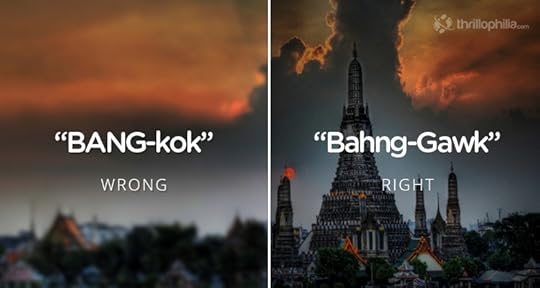
3. Budapest, Hungary

4. Colombia

5. Dubai, UAE

6. Iraq
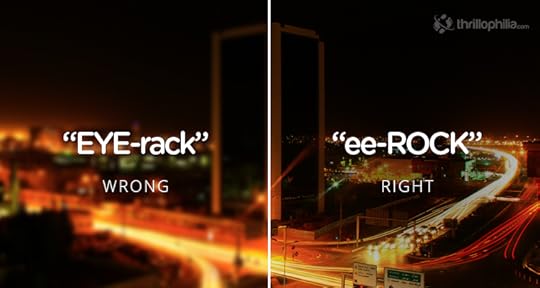
7. Melbourne, Australia
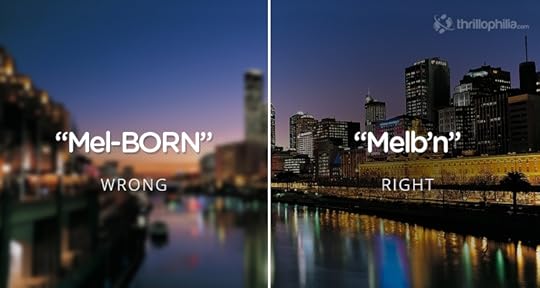
8. Pakistan

9. Phuket, Thailand

10. Qatar

11. River Thames, England
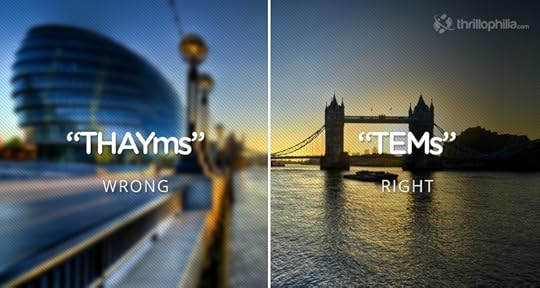
12. Versailles, France

13. Worcester, England

14. Yosemite, California

You can find more mispronounced place names at Thrillophilia’s website. 
These Tajikistan tent views are epic
TAJIKISTAN — a country where 93% of the land is covered by mountains — isn’t a place you hear a lot about. But Russian photographer Oleg Grigoryev’s images might just change all that.
Taken on a hiking trip through the Fann Mountains, the world as viewed through a tent flap at dawn looks seriously good. Titled ‘Morning Views from the Tent’, Grigoryev gives us a glimpse into a country of alpine lakes and snowy peaks that reach nearly 5,500 meters high. And it’s enough to make me want to trade all the espressos in the world for hiking boots and endless mornings in the mountains of Central Asia. How about you? 
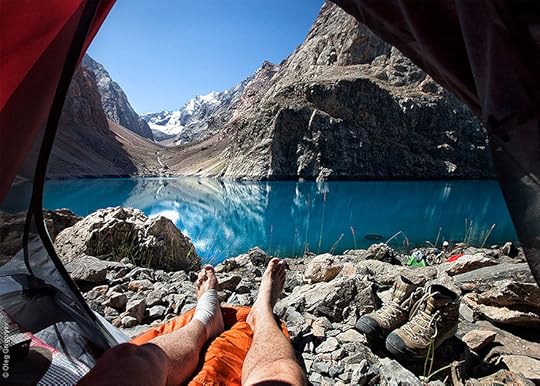
1
Big Allo Lake
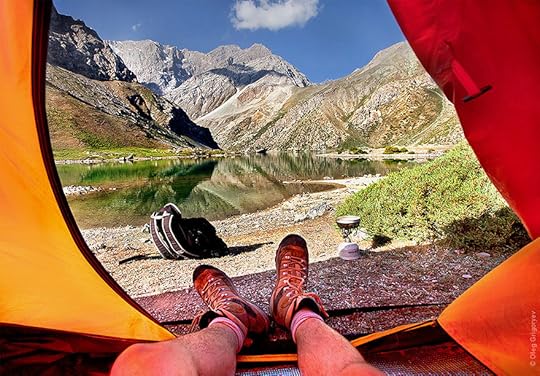
2
Kulikalon Lake
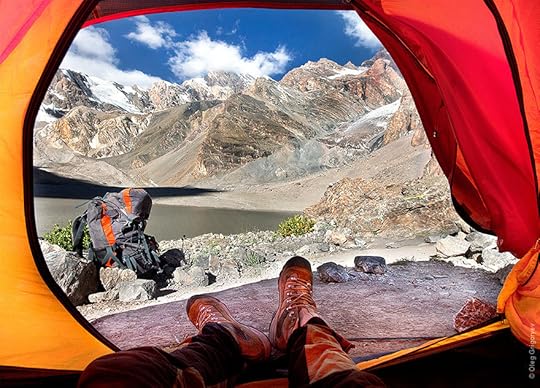
3
Muddy Lake
Intermission
185
12 differences between a normal friend and a Spanish friend
by Ana Bulnes
15 stunning natural features that define Arizona
by Branden Eastwood
45
10 cheapest cities in the world, 2010
by Heather Carreiro
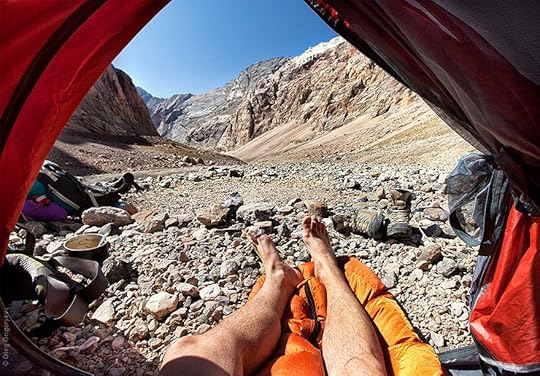
4
Near Mirali Peak
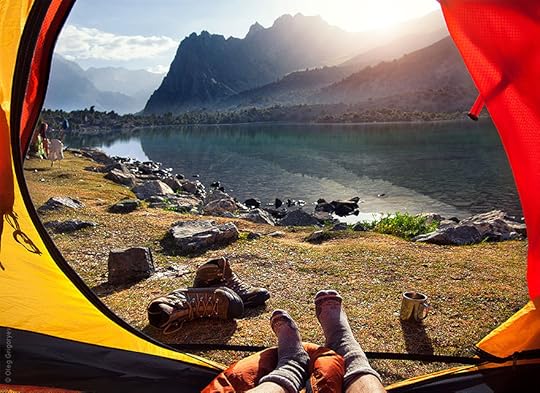
5
Lake Alaudin
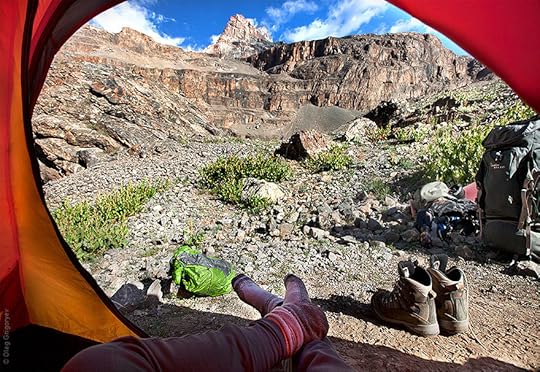
6
Lake Alaudin
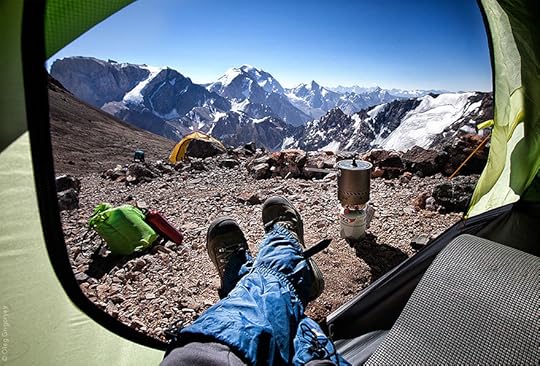
7
Chimtarga
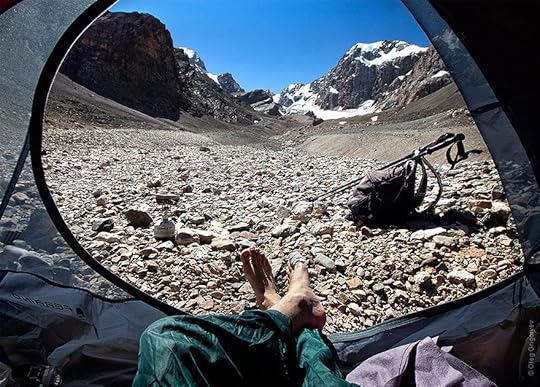
8
Chimtarga
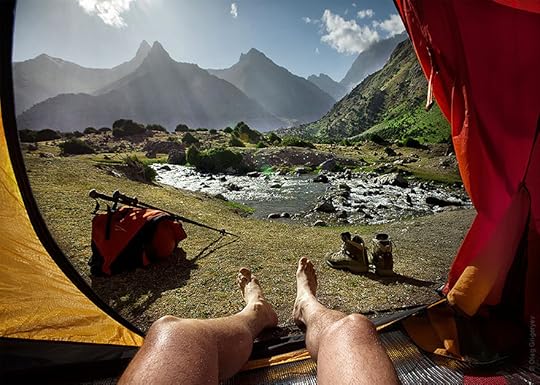
9
Fann Mountains
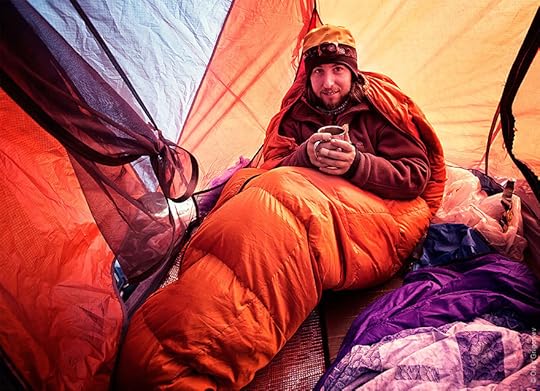
10
Fann Mountains
Matador Network's Blog
- Matador Network's profile
- 6 followers



